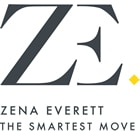As business ramps up again after the holidays, pick a point in the future and visualise what you want to have accomplished by then. I explain how Amazon use a Working Backward method for ultimate success and clarity.
“Begin with the end in mind” is the second of the seven habits that New York Times bestselling author Dr. Stephen R. Covey addressed in his seminal book The 7 Habits of Highly Effective People. He wrote that all things are created twice: once in your mind and once in the physical world.
Choose a time in the future (months or years away, it’s up to you). Visualise that this time is now, and you’ve nailed your craziest, wildest goals. Failure is off the table; you are super successful.
Write a letter to your current self from that future perspective, describing your achievements. This can be a team kick-off exercise or a personal one, whatever matters most to you: business, career, studies, family, fitness.
- What have you achieved?
- Why does this matter so much?
- What difference has this made to you and others?
- How does it feel?
- What rewards have you gained?
- What are people saying about you now?
- What’s next for you now?
- What’s been your greatest lesson?
- How did you focus your time and energy to achieve it?
- What were the crucial steps and milestones?
- What resources did you use?
- What did you have to stay no to, so you could get it done?
Do this soon, before you get bogged down in the daily grind.
Working backwards for exceptional innovation
Thinking retrospectively like this is especially powerful at an organisational level. Amazon is famous for its Working Backwards product development method.
The team starts by imagining their new product is ready to ship. They draft an internal press release for five years in the future. As Hal Gregersen who teaches on the Enquiry Driven Leadership course at MIT says, it describes what the world is so excited about. Then they have about five pages of FAQs of all the issues they might encounter in trying to accomplish this new product.
The team presents the idea to a group of people who read the working backwards document and FAQs for the first time. Tough questions are asked and all possible feedback is given to make the idea even better. More than half the time the go/no-go decision is given at this meeting. Amazon Prime was launched just 111 days after that. The same process was used for Alexa and Kindle. Efficiency on steroids.

